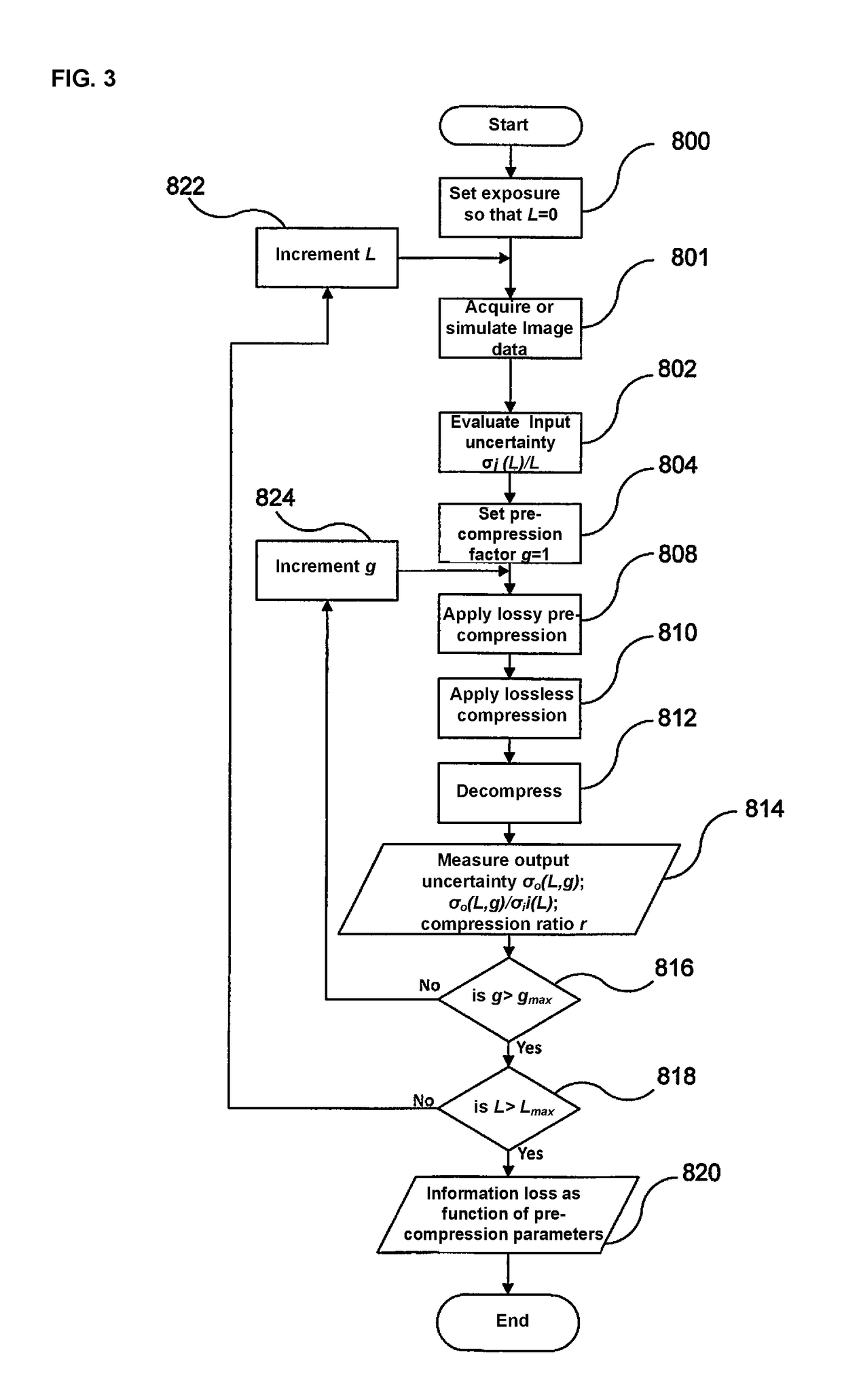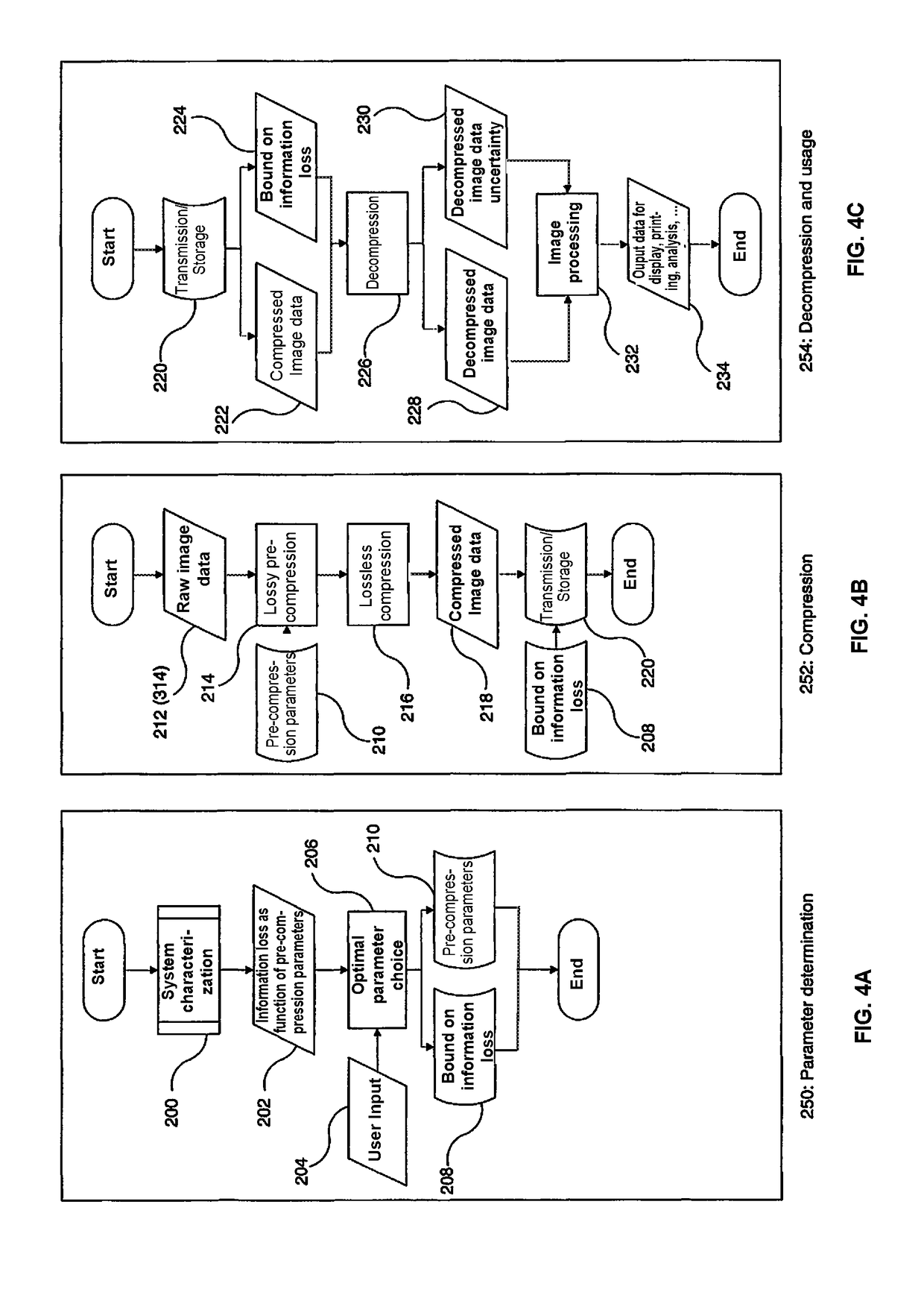Photographic and video data, by its nature, consumes a large part of available
digital resources, such as storage space and network bandwidth.
This results in each raw image requiring hundreds of megabits to be represented, transferred and stored.
The
large size of these raw images imposes several practical drawbacks: within the imaging device (photo or
video camera) the size limits the
image transfer speed between sensor and processor, and between processor and memory.
This limits the maximum
frame rate at which images can be taken, or imposes the use of faster, more expensive and more power consuming communication channels.
This comes at the expense of very low compression ratios of typically 1:2 or less.B.
Lossy
image compression, where the compressed data cannot be restored to the original values because some information is lost / excised during the compression, but which can have large compression ratios of 1:10 and higher.
These compression ratios however come at the expense of loss of
image quality, i.e.
distortion, and the creation of
image compression artifacts, i.e. image features that do not represent the original scene, but that are due to the compression
algorithm itself.
These artifacts are particularly nefarious, as they can be mistaken for image features.
This second step is irreversible, and will introduce quantization errors when reconstructing the image from the aforementioned coefficients.
The quantization error will cause errors in the reconstructed image or block.
Predicting or simulating what the error would be for any image or block is technically impossible, due to the extremely large number of values that such image or block may take.
The amount of
information loss cannot be accurately quantified in standard lossy image compression techniques for the above mentioned reason of the extremely large number of values that such image or block may take and is additionally complicated by the fact that the lossy operation is applied on a space that is not the natural image space.
Several
metrics have been devised to characterize the performance of the compression
algorithm, however, these
metrics have significant drawbacks.
One such drawback is that as they relate quality to the human
visual system and human
perception, which are highly dependent on the subject viewing the image, on the viewing conditions (e.g. eye-to-image distance, lighting of the image, environment lighting conditions, attention, angle, image size) as well as on the image
rendering algorithms (e.g. debayering,
gamma correction) and characteristics of the
output device, such as display,
projector screen, printer, paper etc.
A second drawback of characterizing the quality of image compression algorithms with respect to the human visual systems or models thereof is that for such methods to be relevant, no further
image processing must take place after image compression, as such
processing would make some unwanted compression artifacts visible.
If it is later decided to lighten the image, this detail will have been lost, resulting in visible artifacts.
Yet another problem of the above-mentioned methods is that they are unsuitable for applications not aimed solely at
image reproduction for a human observer, as for example are images for scientific,
engineering, industrial, astronomical, medical, geographical,
satellite, legal and
computer vision applications, amongst others.
For example, inappropriate image compression of
satellite imagery could result in the addition or removal of geographical features, such as roads or buildings.
However, the effect of different compression algorithms and parameters on these
metrics highly depends on the input image, so that it is not possible to specify the performance of an
algorithm, or even to choose the appropriate algorithm or parameters, as applying them on different images gives conflicting results.
A further drawback of the methods described in [6], is that although these methods are quantitative in the sense that they output a value that might be correlated with
image quality, it is unclear how this number can be used: these numbers cannot be used as uncertainties on the value, the compression methods do not guarantee the absence of artifacts, and it is even unclear how these numbers can be compared across different compression methods and input images.
Also, these quantitative methods do not distinguish
signal from
noise, so that for example, a high value of entropy could be given by a large amount of retained
signal (useful) or retained noise (useless).
The impossibility for the above-mentioned methods to achieve compression with quantifiable
information loss arises from the fact that the space in which the algorithm looses data is very large (e.g. number of pixels in the image or block times the number of bits per pixel), and cannot therefore be characterized completely, as we have mentioned earlier.
Pre-compression removes most of the noise, which cannot, by its nature, be losslessly compressed, however, thanks to the properly chosen parameters, this step only removes a negligible amount of information.
 Login to View More
Login to View More  Login to View More
Login to View More 


